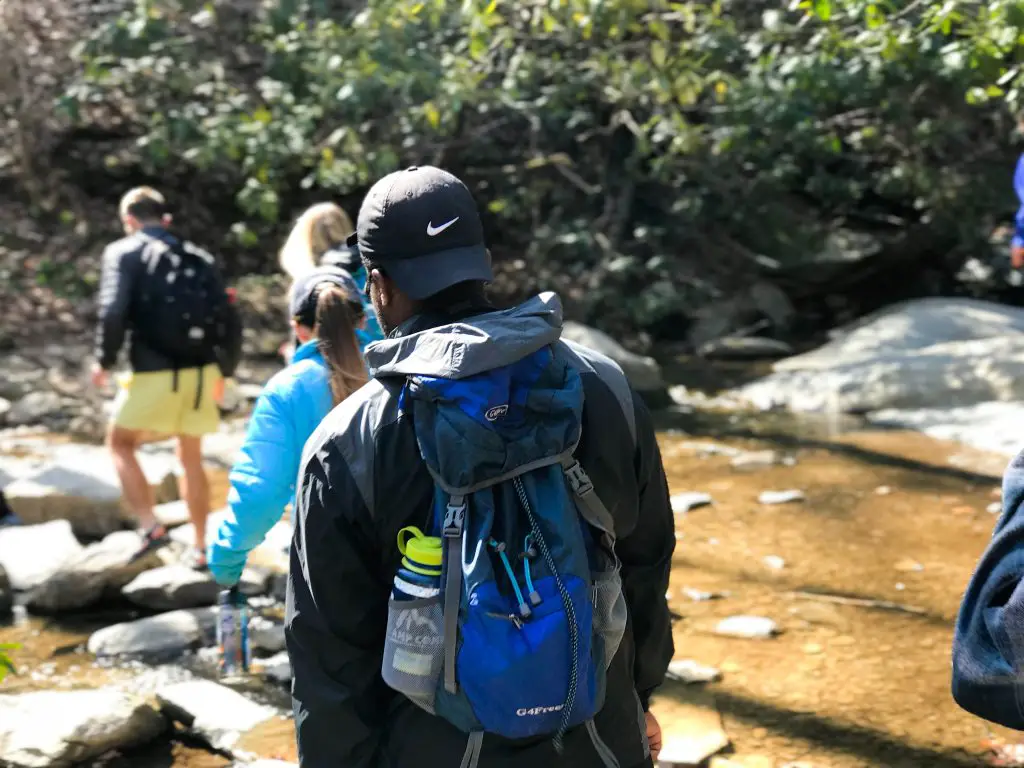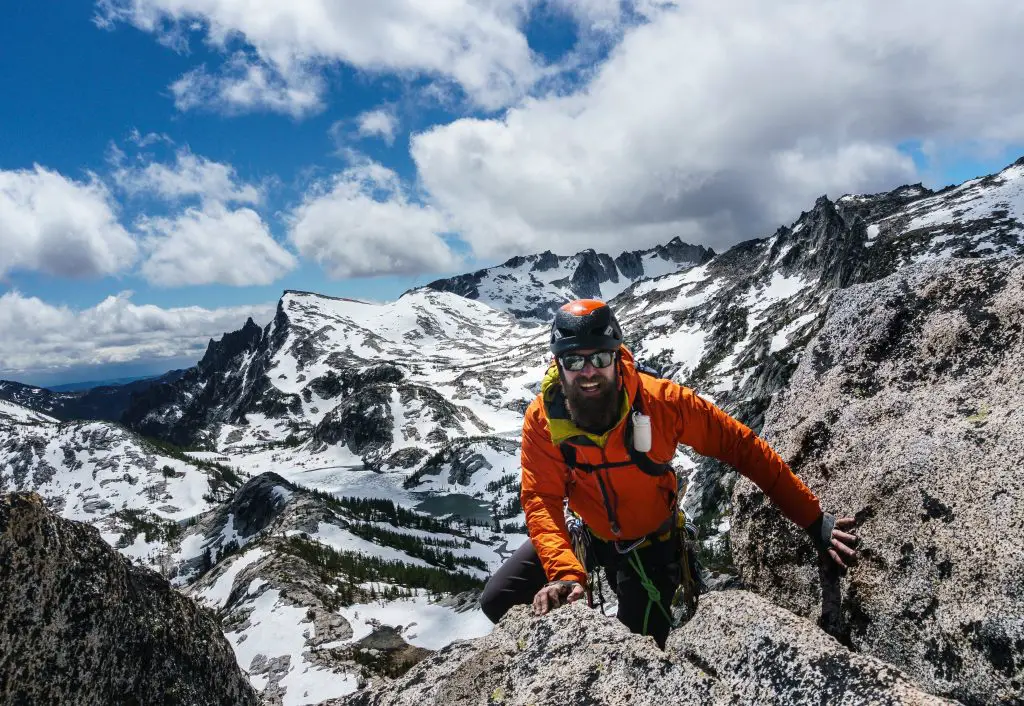Some of the links in this post are affiliate links. This means if you click on the link and purchase the item, I will receive an affiliate commission at no extra cost to you. All opinions remain my own.
Hiking, trekking, backpacking, and mountaineering are popular outdoor activities that allow individuals to explore the beauty of nature, challenge themselves physically, and connect with the environment. While each activity shares certain similarities, such as the need for physical exertion and immersion in nature, each also has distinct differences in terms of duration, terrain, skill level, and purpose.
Hiking is a leisurely activity that involves walking on trails, paths, or tracks for recreation or exercise purposes. Trekking, on the other hand, is a multi-day journey on foot through rural or remote areas, often involving camping overnight. Backpacking, a form of low-cost, independent travel, requires individuals to carry all of their supplies in a backpack. Mountaineering, the sport or activity of climbing mountains, usually involves technical skills and equipment.
Whether you’re seeking a peaceful escape from the hustle and bustle of daily life, an adventure filled with new challenges, or a combination of both, each of these activities has something unique to offer.
In this blog post, we’ll explore the similarities and differences between hiking, trekking, backpacking, and mountaineering and provide insights into which activity might be right for you.

Differences between Hiking, Trekking, Backpacking, and Mountaineering
While all four activities allow individuals to explore the great outdoors, each has distinct differences in terms of duration, terrain, skill level, and purpose. Understanding these differences can help you determine which activity is right for you.
Duration and Distance
Hiking is generally a one-day activity, whereas trekking and backpacking can last for multiple days. Hiking can range from a few hours to a full day, while trekking and backpacking typically last several days to several weeks.
Backpacking and trekking typically cover longer distances than hiking. Hikes are often limited to well-defined trails, while trekking and backpacking can involve off-trail travel and cover much more distance.
Terrain and Environment
Hiking is typically done on established trails, whereas trekking and backpacking can involve off-trail travel. Hikes may take place in a variety of environments, from well-manicured parks to remote wilderness areas.
Mountaineering involves climbing steep, challenging terrain, often above the treeline. This type of activity is typically done in high-altitude mountain environments and requires a high level of skill and specialized equipment.
Skill Level and Equipment
Hiking is generally considered a low-impact activity that requires minimal skill and equipment. Hiking gear typically includes comfortable clothing, sturdy shoes, and a water bottle.
Trekking, backpacking, and mountaineering typically require more skill and specialized gear. Trekking and backpacking gear may include a tent, sleeping bag, and cooking equipment, while mountaineering gear may include crampons, ice axes, and ropes.
Purpose
Hiking is often done for recreational or exercise purposes. Hikers may be looking for a peaceful escape from daily life, or an opportunity to enjoy the beauty of nature.
Trekking, backpacking, and mountaineering often involve a greater sense of adventure or challenge. These activities may appeal to individuals seeking new challenges, a chance to explore remote areas, or a chance to test their limits.
In conclusion, each of these activities offers a unique opportunity to explore the great outdoors and connect with nature. Whether you’re seeking a peaceful escape or a challenging adventure, understanding the differences between hiking, trekking, backpacking, and mountaineering can help you find the right activity for you.

Similarities between Hiking, Trekking, Backpacking, and Mountaineering
While each of these activities has its own distinct differences, there are several key similarities that connect them. Understanding these similarities can help you see how each activity is part of a larger outdoor experience.
Immersion in Nature
All four activities allow individuals to immerse themselves in the beauty of nature. Whether you’re hiking a well-defined trail in a park, trekking through remote wilderness areas, or climbing a mountain, each activity provides a unique opportunity to connect with the natural world.
Physical Exertion
Each of these activities requires some level of physical exertion. Hiking, trekking, backpacking, and mountaineering all involve walking or climbing, which can be challenging and physically demanding.
Independent Travel
All four activities are forms of independent travel. Whether you’re hiking for a few hours, trekking for several days, or climbing a mountain, each activity allows you to set your own pace and explore the world on your own terms.
Connection with Others
Each activity can provide opportunities for connection with others. Whether you’re hiking with friends, joining a trekking group, or climbing a mountain with a partner, these activities can be a chance to connect with others who share your passion for the great outdoors.
In conclusion, despite the differences between hiking, trekking, backpacking, and mountaineering, each of these activities is part of a larger outdoor experience that allows individuals to connect with nature, challenge themselves physically, and enjoy independent travel. Whether you’re a seasoned adventurer or just starting out, these activities offer a unique opportunity to explore the world and connect with others.

Conclusion
Hiking, trekking, backpacking, and mountaineering are all outdoor activities that allow individuals to connect with nature, challenge themselves physically, and experience independent travel. Whether you’re seeking a peaceful escape or a challenging adventure, each of these activities has something to offer.
The key to choosing the right activity is understanding the differences and similarities between each. Hiking is a one-day activity that typically involves established trails, minimal equipment, and recreational or exercise purposes. Trekking and backpacking are multi-day activities that involve longer distances, more challenging terrain, and a greater sense of adventure. Mountaineering is the most challenging of the four, involving climbing steep, challenging terrain in high-altitude mountain environments.
Despite the differences, all four activities share key similarities, including immersion in nature, physical exertion, independent travel, and opportunities for connection with others.
Whether you’re a seasoned adventurer or just starting out, understanding the differences and similarities between these activities can help you find the right activity for you.
What to read next?
Travel tips and tricks:
- Save big on flights with Skyscanner.com – This incredible tool lets you find the most affordable airfare to your dream destination. You’ll love their “Whole Month” feature, which displays the best prices for the entire month. If you’re flexible with travel dates, this is a game-changer for scoring the cheapest tickets.
- Stay in the heart of the action – I always find the perfect accommodation on Booking.com. Their map view lets me filter hotels by my budget and select ones that are right in the center of it all. Trust me, you won’t want to miss this easy way to book your ideal stay!
- Go beyond the resort – I’m all about making the most of my trips, and GetYourGuide.com has been a lifesaver for booking unforgettable tours and day trips. It’s the most hassle-free way to dive into the local culture and explore the hidden gems in every new place.
- Hit the road with DiscoverCars.com – There’s no better way to explore your destination than by car! Renting a vehicle has never been easier, and with their competitive prices, you’ll have the freedom to create your own adventures.
I highly recommend trying these tools for yourself – not only will you save money, but you’ll also create memories that last a lifetime. Happy travels!